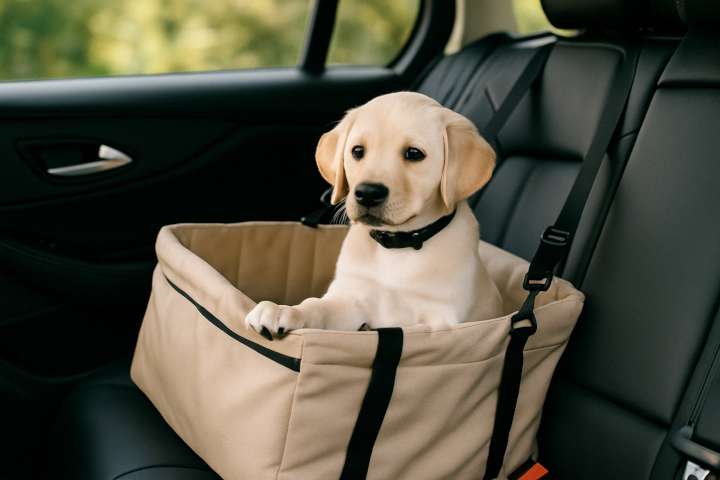Your dog’s first car ride is more than just a trip—it’s the beginning of countless adventures together. Whether you’re bringing your puppy home for the first time or taking a recently adopted dog to their new forever home, that initial travel experience sets the tone for future car journeys.
But traveling can be stressful for dogs, especially when everything is new and unfamiliar. In this guide, you’ll find expert-backed tips to make that first ride safe, calm, and comfortable—for both of you.
Why the First Car Ride Matters
A dog’s early experiences with car travel can shape how they respond to it long-term. A positive first trip can make future vet visits, vacations, or road trips much easier, while a stressful one may lead to anxiety, restlessness, or car sickness.
By preparing properly, you help your new dog associate car rides with safety, comfort, and even fun.
1. Prepare Before the Ride
Before your dog ever steps into the vehicle, make sure you’re ready:
- Plan a short trip for the first ride, ideally 15–20 minutes.
- Bring essential supplies, including a leash, waste bags, water, and a few favorite treats.
- Choose the right time—avoid peak traffic hours and aim for a calm moment in your dog’s day.
- Avoid feeding right before the ride to reduce the risk of motion sickness.
If your dog will be wearing a harness or using a crate, let them explore it ahead of time in a relaxed setting.
2. Choose a Safe Travel Setup
Safety is non-negotiable. Depending on your dog’s size and comfort level, you can choose:
- A secure crate or travel carrier—great for puppies or nervous dogs
- A crash-tested harness seatbelt—ideal for medium to large dogs
- A booster seat or dog hammock—useful for small breeds
Never let your dog ride unrestrained in the front seat or on your lap. Airbags can be dangerous, and loose dogs can distract the driver or become injured in sudden stops.
3. Make the Car a Positive Place
Before starting the engine, let your dog sit in the car while it’s stationary. Give treats, speak calmly, and allow them to explore the space.
Once moving, keep the experience gentle:
- Use soothing music
- Speak softly and reassuringly
- Avoid sharp turns or sudden braking
- Crack a window slightly for ventilation—but never enough for your dog to stick their head out
Some dogs may feel more comfortable with a blanket or toy that smells like home.
4. Watch for Stress or Motion Sickness
New dogs may show signs of stress such as:
- Panting
- Whining
- Drooling
- Pacing
- Vomiting
If your dog becomes overwhelmed, stop in a safe place and allow them to regroup. For dogs prone to car sickness, your vet may recommend anti-nausea treatments or gradual desensitization to travel.
5. Practice Short Rides First
Build up your dog’s confidence over time:
- Start with short rides around the block
- Gradually increase the distance and duration
- Visit fun destinations like a quiet park or pet-friendly café
Repetition helps reduce anxiety and builds trust. Make every trip end in something positive, like praise, treats, or a walk.
6. After the Ride: Positive Reinforcement
Once you arrive, reward your dog immediately. Offer treats, affection, and a calm environment to reinforce the idea that car rides lead to good things.
If the first trip went well, plan the next one soon to keep building confidence and familiarity.
Conclusion
The first car ride with your new dog can be a smooth and positive experience with the right preparation. By focusing on safety, comfort, and calm reinforcement, you’re not only easing anxiety but laying the foundation for a confident, well-adjusted travel companion.
Need help planning your first vet visit or road trip with your dog? Explore more tips in our Traveling with Dogs section.

